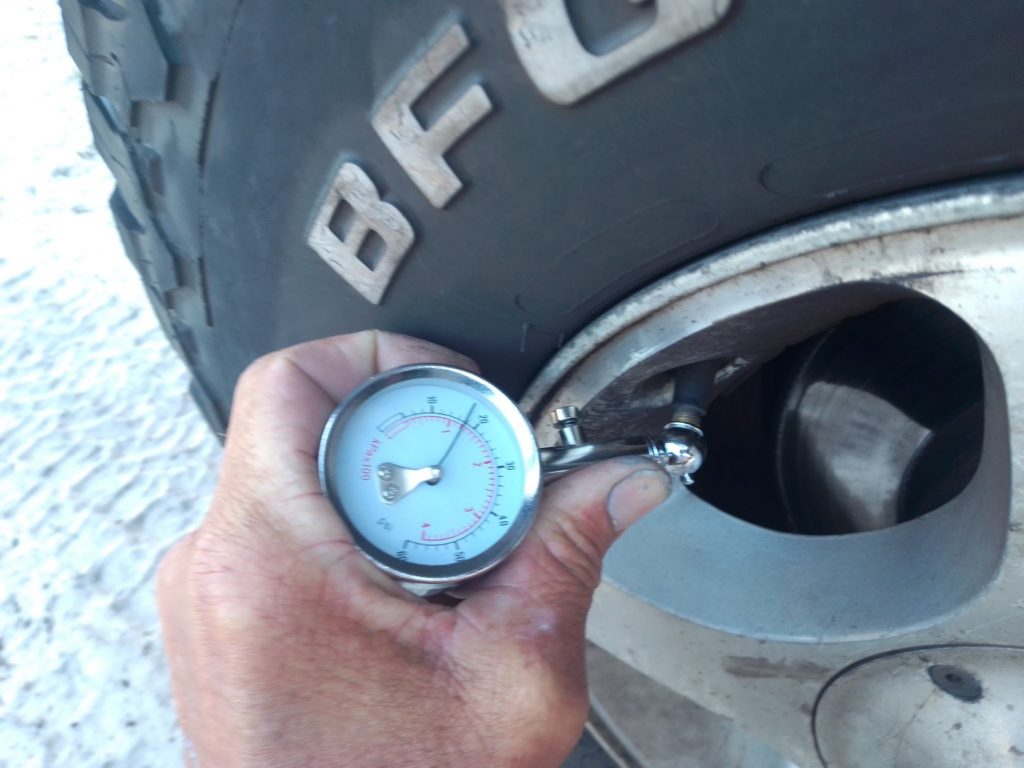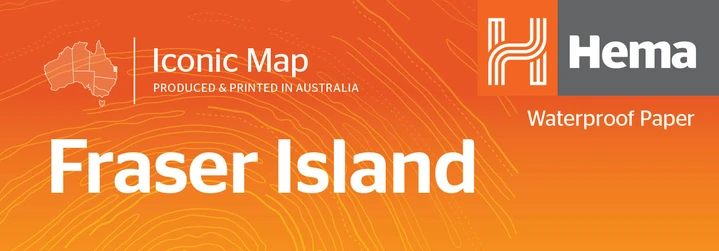This subject matter is extremely important if you plan on towing a caravan or camper onto Fraser Island. Especially so if you have never done off road sand driving.
The first thing is not to under estimate just how treacherous the driving on Fraser Island can be. With continuous tide changes, weather and vehicle traffic, the beaches, the sand and the tracks are constantly changing.
A golden rule is – do not plan to tow a caravan or camper unless they are built and designed for 4WD Off road conditions. This means both your vehicle and van need to have high under body clearance and modified suspension.
If you have a caravan and have had some towing experience you will already be familiar with general towing safety.
However you may not have experience with sand driving or you just need some further information as to what to expect on Fraser Island.
Top Tips For Towing On Fraser Island
Here is a crucial list for your towing preparations on Fraser Island:
1. Safe and Secure
Ensure that all the hatches and cupboards are closed /locked and any exterior racks or fittings are secure on the caravan or trailer.
Test indicators, brakes and lights prior to setting off. The beach and the tracks on Fraser Island can be lumpy and washouts can cause some unexpected bouncing of your vehicle and load.
2. Lock and Load
As you are going off road it is essential that you have some basic recovery gear for sandy conditions.
- Portable air compressor
- tyre pressure gauge
- shovel
- 2 x MaxTrax or similar
- Snatch strap
- Spare D shackles

3. All about the TYRE PRESSURE
The single best advice that can be offered about driving on Fraser Island is all about the tyre pressure. As general suggestion your 4WD vehicle tyre pressure should be around 18-20psi.
In addition your caravan also needs to have lowered air pressure so the tyres can float on the sand surface.
The best way to gauge how low to go with the van is by measuring the length of the flattened area of your Vehicle tyre with a tape measure ( after you have lowered the pressure)
Use this measurement to lower the tyre pressure on the van/trailer tyres to the same width.
The reason for this is because the higher the pressure the deeper the tyres will dig into the sand. Lower pressures will also give a smoother and softer ride that will be more comfortable for the vehicle and the passengers.
Every vehicle is different so you will be required to compensate for your individual 4WD and caravan or trailer.
4. Slow and Steady
Common sense when towing is just ensuring that you take the driving slow and steady. Don’t be in a hurry and don’t try and race the tides when you are on Fraser Island.
Ensure that you travel the beaches on low tides, usually 2 hours before low and up to 2 hours after low tide. Allow plenty of travel time to get to your destination without pushing time and your accelerator.
5. Low is the go
Low is the go for tyre pressure, speed and drive as low as you can go on the beach. This means drive downhill towards the water where the more compact sand is.
You will need to consider oncoming vehicles but wherever possible drive along the hard wet compacted sand, not the high fluffy sand along the top of the beach.
Less chance of getting stuck. For the sake of your vehicle don’t drive in the salt water.
6. Steady Steering
Just like towing on the road, you need to make sure that you don’t take corners too sharply on the inland tracks, particularly between Eurong and Central station and another notorious track between Champagne Pools and Orchid Beach.
The tracks can be narrow, single lane and boggy. Added caution also if you are setting up camp on 75 Mile Beach and you need to drive up and over small sand dunes to get to the flat elevated areas.
Plenty of vans get stuck trying to access the perfect viewing spot
7. Beat the Bogging
Towing a van onto Fraser Island is certainly a challenge for any driver. The probability that you will get bogged at some point is inevitable. However, try these simple steps:
- Pick a line – look far enough ahead to anticipate the unexpected ahead. Especially when navigating around the rocks at Poyungen Valley.
- Momentum – not speed is key. Pick a gear or speed that is comfortable without wheel spin.
- Drive sensibly – stay in the correct gear to allow plenty of engine torque and learn to ‘read’ the terrain ahead, while avoiding the deepest, softest sand if you can.
As a general guide if you do get bogged – STOP.
Do not try to accelerate out, as you will only be digging yourself a deeper hole to try and get out of. Drop the tyre pressure a little more. You can go as low as 6psi.( just remember when you are out to to re inflate them up again)
If a lower pressure doesn’t do the trick pull out the shovel and the MaxTrax and try again.
Don’t panic if you find that you cant get yourself out. There is always plenty of vehicles with kind drivers that are always ready to lend a hand.
8. Match the Wheel Tracks
Ideally, your towing vehicle and caravan / trailer will have the same wheel track (left-right distance to centre of tyres), so that your trailer is following in the same tracks as the vehicle.
This makes towing easier because the load is riding in sand that’s already been compacted by your vehicle.
9. Keep An Eye on the Temp
Driving the soft sand on Fraser Island with a heavy load can strain your cooling system and cause a rise in your temperature.
Keep an eye on your gauges.
10. Dial Down the Brakes
Its a good idea to dial down the electric brakes a little so they don’t lock up so hard.
This is particularly so when driving along 75 Mile beach and you suddenly find yourself fast approaching a washout or sand bank.
11. Sand drinks the Fuel
The downsides of sand driving is that your vehicle is going to drink the fuel. Prepare to halve your usual fuel efficiency.
So the warning in this – expect your wallet and your tank to be drained. Fuel up before you get on the Barge.
If you need to re fuel expect to pay at least a dollar more per litre than the mainland. You will find stations at:

12. Don’t Drive and Tow in the Dark
A common mistake with travellers is they pick a day to arrive on the island with a late afternoon low tide.
This may be convenient in theory especially if you have travelled all day to get to the Barge but not a good idea.
Many travellers find that they under estimate driving times or they get stuck in a long queue for the barge, or get stuck in a sand bog.
Nothing worse that travelling slow with a heavy load with the time and the sunlight running out.
Driving in the dark is dangerous even on a low, low tide. There can be washed up debris and visibility is impaired.
This is especially dangerous when towing. Not to mention setting up camp in the dark is not ideal and doing it on Fraser is especially challenging.
Pretty hard to find your allocated camp-site along the beach in the dark.
Instead try get to the Barge on an early morning low tide so you have plenty of daylight hours should something unexpected happen.
Last But Not Least
When planning your trip ensure that you have all the relevant permits in Place. You will need a vehicle permit and a camping permit to bring your caravan to the island.
You can access all this information through QPWS or here for more information.
Have a fantastic trip to Fraser Island. You will certainly have some great memories and photographs to share.
